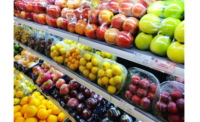Legislation and ingredients to offer cost threats to CPG industry
Rising ingredient costs and new legislation will be the main barriers to profitability for consumer packaged goods (CPG) companies between now and 2021, according to consumer insight firm Canadean (canadean.com).
The company’s latest report into the greatest threats facing the CGP industry states that manufacturers will spend more time adjusting formulations and labeling to account for legislative changes. In addition, suppliers will face increased pressure from buyers to keep ingredient costs down, and there will be continued interest in lean processes across the supply chain to minimize costs and time of production.
Canadean’s research states that 43% of industry executives believe that the costs of ingredients will rise significantly by 2021. Executives in Asia-Pacific are the most likely to identify ingredients as an area of concern, with 55% believing that ingredient costs will rise significantly over the next five years. The World Bank forecasts that the prices of commodities such as coffee, ground nut oil, palm oil, soybean oil, barley, wheat, maize, and rice will increase significantly between 2016 and 2021.
Ronan Stafford, senior analyst with Canadean, explains: “Rising ingredient costs mean the pressure to stay lean and efficient will only grow. This is good news for ‘big’ data, as the industry will continue to turn to analytics to hunt down any and all inefficiencies in their processes. Suppliers, however, are likely to feel more ambivalent about the news: prices might go up, but so will the pressure from their buyers to get the best possible deal.”
Alongside the concern over ingredient costs, 43% of CPG executives surveyed believed the costs of complying with legislative changes will increase significantly over the next five years. This makes legislation a more expensive threat than the rising costs of hiring experienced staff, or the costs of improving distribution and logistics.
Stafford concludes: “The industry is especially wary of the costs of complying with new food safety acts and laws governing nutritional labelling and marketing claims. This concern is highest in Europe and Asia-Pacific, where governments are signaling an increased willingness to regulate consumer markets.”
Looking for a reprint of this article?
From high-res PDFs to custom plaques, order your copy today!




